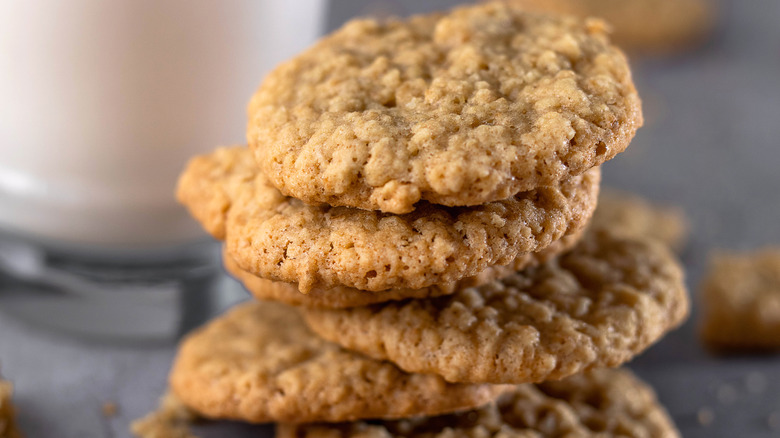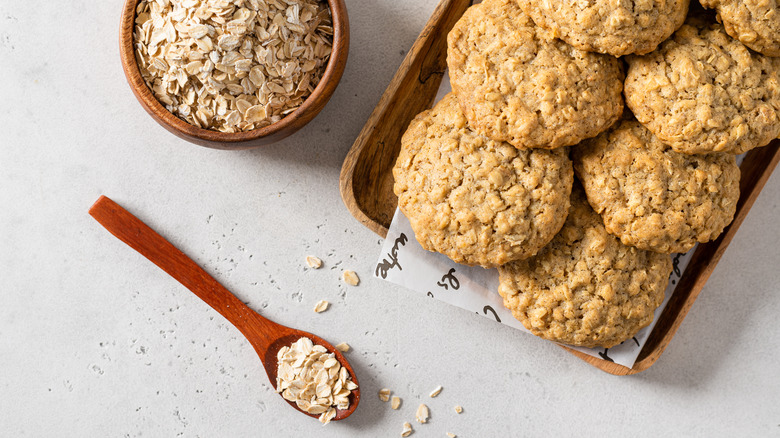Use Old-Fashioned Oats For A Chewier Cookie
The kinds of ingredients you use can make a big difference in any recipe. Cookies, in particular, can be dramatically altered with the absence — or the inclusion — of a specific ingredient. And when it comes to the oatmeal variety, the type of oats you mix into your batch of dough can impact both the taste and texture of your finished baker's dozen. From soaking raisins to swapping flour, cooks around the world have come up with unique culinary hacks that result in chewier, gooier oatmeal treats.
As tempting as it might be to use whatever ingredients are tucked away in your kitchen, a bit of preparation and planning can go a long way when it comes to baked goods. Oats are not created equal, especially when folded into cookie dough, so before you ready your mixer and get to measuring ingredients, take notes of the oats you have on hand.
Old-fashioned goodness
While any kind of oat — old-fashioned and quick-cook — can result in a tasty batch of cookies, bakers will notice a difference between the two when it comes to cookie texture and shape. Quick-cook oats absorb water more quickly, resulting in a drier dough and cookies that sit more compactly on a baking sheet. Biting into cookies made with this type of oats is a softer, almost cake-like experience, as the water-absorbent oats yield a moister treat.
However, using old-fashioned oats can help bakers pull chewier cookies out of the oven. You'll get a browner cookie, as these particular oats take longer to cook, and the difference in texture will be noticeable as you bite into that first treat.
For a homemade batch of irresistible oatmeal cookies, first soak the oatmeal and any dried fruit you intend to mix into your batch of dough. Chef Duff Goldman insists this tip results in an unmatched level of chewiness, and when paired with old-fashioned oats, eating only one cookie without reaching for seconds will feel like a major challenge.

